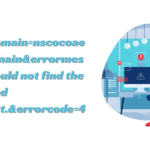How to Conduct a Successful Remote Hiring Process: Challenges and Solutions
- 1 Understanding the Remote Hiring Process
- 2 Challenges in Remote Hiring
- 2.1 Communication Barriers
- 2.2 Technology Issues
- 2.3 Assessing Cultural Fit
- 2.4 Evaluating Skills Remotely
- 2.5 Legal and Compliance Issues
- 2.6 Time Zone Differences
- 2.7 Building Trust
- 3 Best Practices for Remote Hiring
- 3.1 Create a Comprehensive Job Description
- 3.2 Use a Structured Interview Process
- 3.3 Leverage Technology for Collaboration
- 3.4 Provide a Positive Candidate Experience
- 3.5 Ensure a Smooth Onboarding Process
- 3.6 Seek Feedback
- 4 Conclusion
In today’s world, remote work has become a standard practice for many businesses. Hiring remote employees can be a great way to find the best talent without geographic limitations. However, conducting a successful remote hiring process comes with its own set of challenges. This article will explore these challenges and offer practical solutions to overcome them.
Understanding the Remote Hiring Process
Before diving into the challenges and solutions, it’s essential to understand what a remote hiring process involves. Hiring remotely means finding and bringing on new team members who will work from a different location than the rest of the team. This often includes:
- Job Posting and Outreach: Creating and sharing job listings on various platforms.
- Application Review: Screening resumes and applications to shortlist candidates.
- Interviews: Conducting virtual interviews to assess candidates.
- Selection: Choosing the best candidate for the role.
- Onboarding: Integrating the new hire into your remote team.
Challenges in Remote Hiring

Communication Barriers
Effective communication is crucial for remote hiring. Miscommunication can lead to misunderstandings and mistakes.
Solution: Use clear and concise language in all communications. Leverage tools like video conferencing, chat applications, and collaborative platforms to ensure everyone is on the same page. Set expectations about response times and preferred communication channels.
Technology Issues
Technical problems, such as poor internet connection or software glitches, can disrupt the hiring process.
Solution: Test all technology before the interview. Ensure you and the candidate have access to reliable internet and functioning equipment. Have a backup plan, such as a phone call, in case of significant technical difficulties.
Assessing Cultural Fit
Determining whether a candidate fits your company’s culture can be challenging without face-to-face interactions.
Solution: Use detailed questionnaires and situational questions to understand a candidate’s values and work style. Include team members in the interview process to gauge cultural fit from different perspectives.
Evaluating Skills Remotely
Assessing a candidate’s skills without observing their work in person is harder.
Solution: Use practical assessments or tasks relevant to the job. For example, if hiring a designer, ask for a design task; if hiring a writer, request a writing sample. These tests help evaluate skills objectively.
Legal and Compliance Issues
Depending on the candidate’s location, remote hiring can involve different labour laws and regulations.
Solution: Research and understand the labour laws of the candidate’s country or state. Consult with legal experts or HR professionals to ensure compliance with all relevant regulations. Use clear employment contracts about job expectations, work hours, and payment terms.
Time Zone Differences
Coordinating interviews and meetings can be difficult when you and the candidate are in different time zones.
Solution: Use scheduling tools that accommodate multiple time zones. Be flexible and willing to adjust your schedule to meet with candidates at a time that suits them. Communicate the time zone you are using to avoid confusion.
Building Trust
Trust is a key element of any working relationship, and it can be harder to build with remote employees.
Solution: Establish clear expectations from the beginning. Foster open communication and create opportunities for team interaction. Regular check-ins and team-building activities can help build relationships and trust.
Best Practices for Remote Hiring

Create a Comprehensive Job Description
A clear and detailed job description helps attract suitable candidates. Include the job’s responsibilities, required skills, and qualifications. Specify if any remote work experience is necessary.
Use a Structured Interview Process
A structured interview process helps ensure fairness and consistency. Prepare a set of standard questions to ask each candidate, and use the same criteria for evaluation.
Leverage Technology for Collaboration
Use collaboration tools to streamline the hiring process. Platforms like Zoom, Slack, and Trello can help manage communication, interviews, and task assignments.
Provide a Positive Candidate Experience
Make sure the hiring process is smooth and professional. Communicate clearly and promptly with candidates and provide feedback after interviews. A positive experience reflects well on your company and can attract top talent. Implementing candidate experience software can help ensure consistent communication and a streamlined process, making it easier to keep candidates engaged and satisfied from start to finish.
Ensure a Smooth Onboarding Process
Once you’ve hired a candidate, ensure they have a smooth onboarding experience. Please provide them with the necessary tools and resources and introduce them to the team. Set up regular check-ins to help them integrate into their new role.
Seek Feedback
Regularly seek feedback from candidates and new hires about their experience. This feedback can help you improve your hiring process and address any issues.
Conclusion
Conducting a successful remote hiring process involves navigating various challenges, but you can overcome these obstacles with the right strategies and tools. Clear communication, effective use of technology, and a structured approach to interviewing and onboarding are vital in finding and integrating the best remote talent. You can build a solid and effective remote team by addressing the common challenges and implementing these solutions.

















